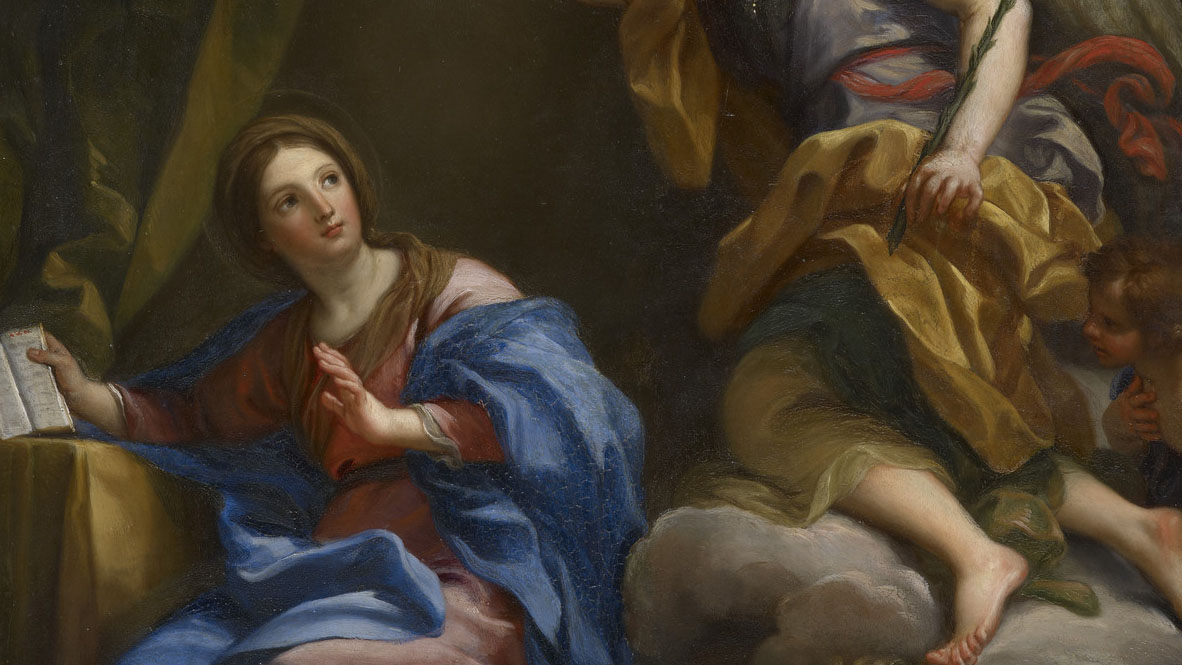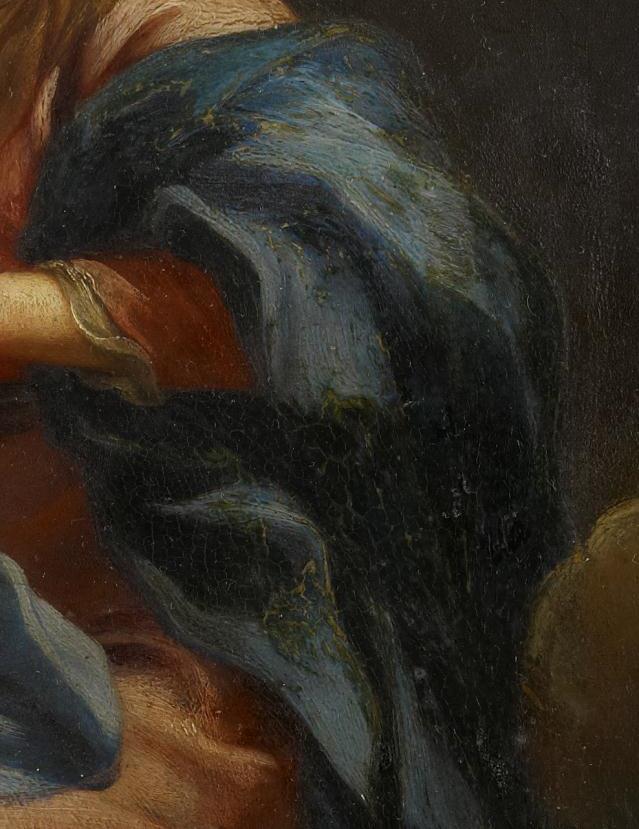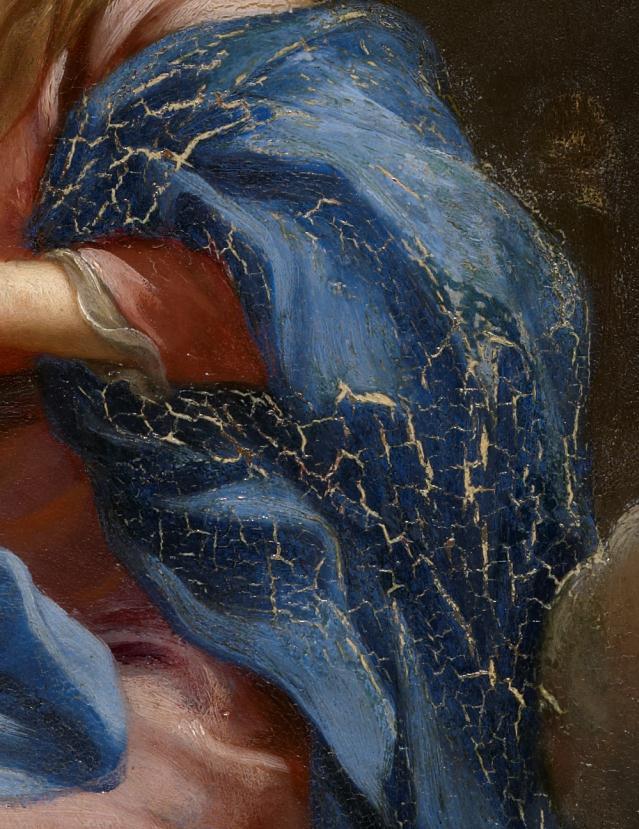
Conserving Maratti's 'The Annunciation'
Treatment was needed before the First Georgians exhibition
Treating the panel
The Annunciation is painted onto a large copper panel, which is very thin in relation to its size. If handled, the panel is likely to flex abruptly, and because of this the paint film has become vulnerable to delamination - a process whereby the bond between the paint and the panel has weakened and caused paint loss.
Moreover, at some point in its history it appears that the panel may have been dropped on its lower left corner, where there is evidence that the panel has crumpled diagonally in a concertina shape with much loss of original paint. Other deformations to its structure can also be seen at the lower and upper right corners.
Before anything else could be done, the areas of loose and lifting paint had to be secured or 'consolidated'. This was undertaken by locally humidifying the unstable area and then feeding in a solvent-based polymeric adhesive (a water-based adhesive could not be used as it may have led to corrosion of the copper panel).
Next, a heated spatula was gently held over the area until the paint was sufficiently plasticised to return to place.
Once the painting was safe to put upright, it was possible to start varnish removal.
The paint film was covered with some very discoloured layers of varnish. These were removed using combinations of solvents that were able to solubilise and lift away the varnish layers while leaving the original paint film beneath unaffected (as shown in the images here).
Once the obscuring varnish had been largely removed, it was possible to see the old mismatching overpaints from previous campaigns of treatment, for instance in the Virgin's blue drapery (shown below). These would have been put on to conceal the disfiguring drying cracks that occurred early in the painting's life. These original additions then discoloured over time. They had toughened as well, making them difficult to remove, except painstakingly under the microscope.


Other areas of heavy and discoloured overpaint were found at the damaged and deformed corners, particularly at the lower left. When the overpaint was removed, fragments of original paint became visible and it was possible to see more clearly what the artist's intentions had been.
Once the cleaning process was completed, a coat of varnish was brushed on to saturate the paint surface and isolate the original paint film from the retouching work soon to follow, ensuring reversibility in the future.
Next the losses were filled with a putty made of chalk and sturgeon glue (shown left).
Retouching was then undertaken over the losses using dry pigments ground in egg and water over the losses. Dry pigments bound with a conservation resin were used where necessary on the original surface.







